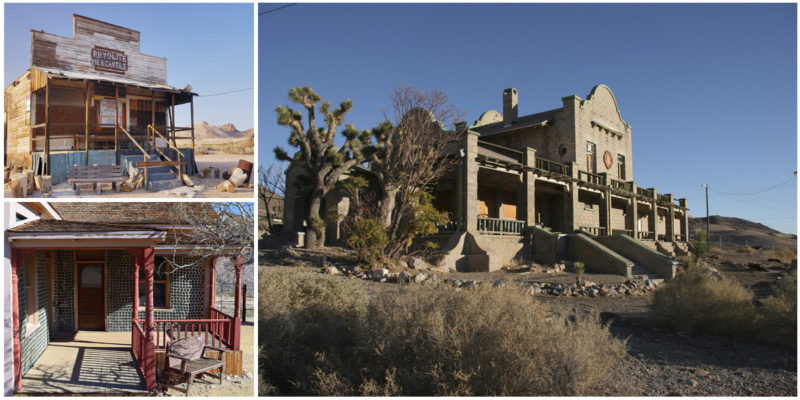One of the most fascinating ghost towns in Nevada is Rhyolite, whose abandoned buildings tell the story of a wealthy gold rush industry. It is situated in the Bullfrog Hills, close to Las Vegas and the eastern edge of Death Valley. It had a population of over 10,000 at one time which means that the town was not small at all.
Rhyolite was founded in 1905 as a mining camp, and the reason for its existence was the gold that was discovered in the surrounding hills. At that time, several mining camps were opened in the area, and many developers, gold-seekers, and miners came into the district.
The biggest producer of the town was Charles M. Schwab who in 1906 bought the Montgomery Shoshone Mine. He invested a lot in the small city, adding services such as piped water, railroads, electric lines. By 1907, Rhyolite had water mains, a hospital, a school, an opera house and many other buildings needed in a growing town.
It rose so quickly, and it declined even quicker. The 1906 San Francisco earthquake and the 1907 financial crisis meant that it was tough for Schwab to raise development capital as the richest gold seams became depleted. As the business started to, fail many miners and other workers of the firm began to move elsewhere, and the population dropped drastically.
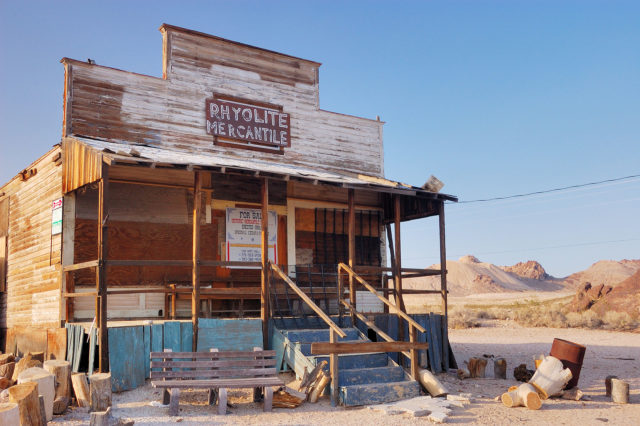
The Montgomery-Shoshone Mine closed its doors in 1911. A decade later, the city became a tourist attraction, and often it served as a filming location. Most of the buildings have been torn down, and the materials were used for other constructions in towns nearby such as Beatty.
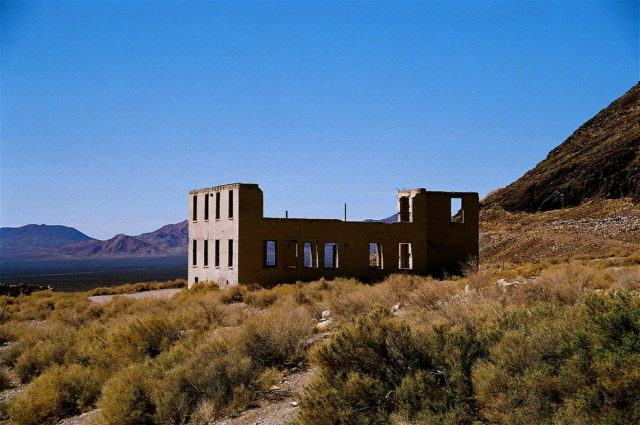
The only parts that are preserved are the house made of empty bottles and the railway depot. One mile south of the abandoned city at the base of Ladd Mountain, three companies operated a profitable open-pit mine, and the Goldwell Open Air Museum is nearby on private property owned by the Bureau of Land Management.
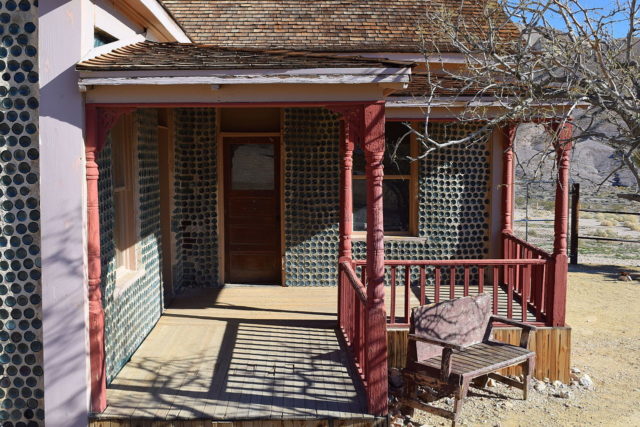
The gold rush began with the discovery of gold in the Nevada Hills by Cross and Harris on August 9, 1904. Word spread very quickly in the near towns and further, and very soon many hopeful people rushed to the area later known as the Bullfrog Mining District. After the settlers had chosen their places within the district, the biggest number of them was in Rhyolite. The original owner of the Montgomery mine was Ernest Alexander Montgomery who sold the mine to Charles M. Schwab in 1906.
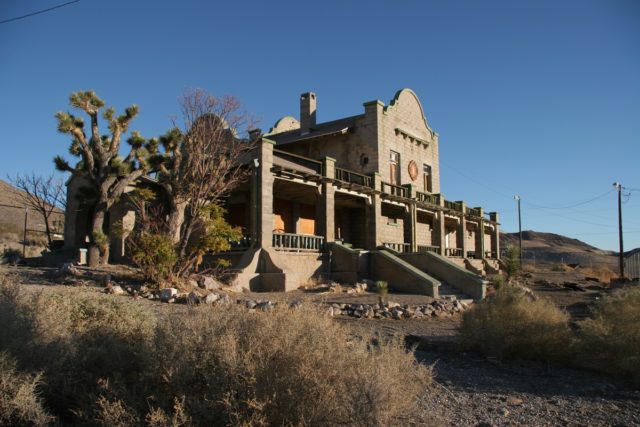
According to Richard E. Lingenfelter and his book about Death Valley, in 1907 about 4, 000 people lived in the city. Only one year later, the population grew to 8,000 and quickly to 10,000. The most prominent of all the buildings in Rhyolite was the John S. Cook and Co. Bank located on Golden Street. Other large buildings were the Overbury Block, the train depot, and the school.
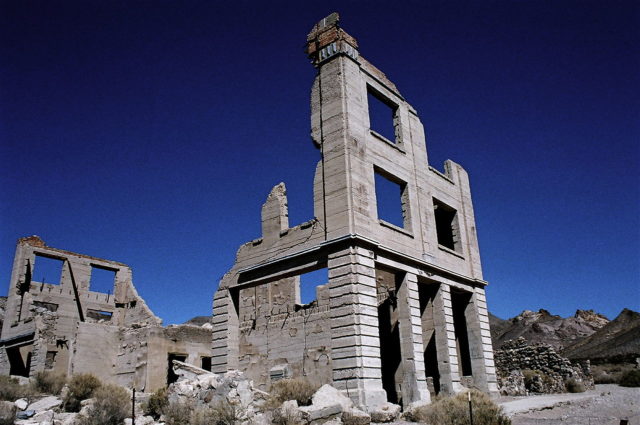
The unique bottle house was built in 1906 by a miner named Tom T. Kelly from 50,000 bottles of various liquor. Oone building housed the Rhyolite Mining Stock Exchange and every year it was filled with brokers from different large cities. By 1909, no new ore was discovered, and the work of the mine started to slow down. For most of the year of 1910 the mine operated at a loss and in 1911, on March 14, it finally closed. There is a ruin of a two-story masonry building that can be seen today with many windows opening but no glass.
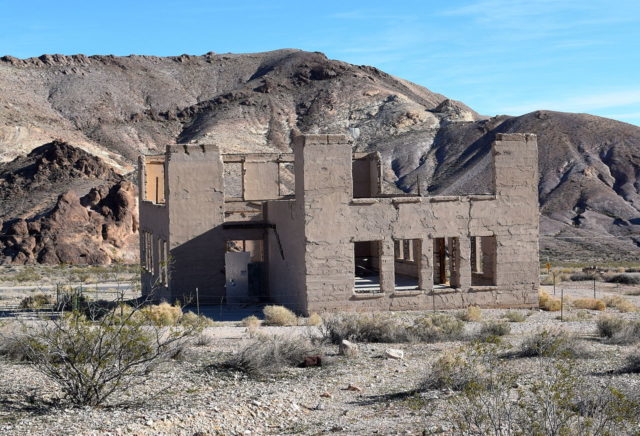
Another ruin that remains is the school which began it’s decline before the mine was finally closed. Today, this ghost town is one of the most photographed cities in the West. The ruins of the Cook Bank Building were used as a filming location for the movie The Reward from 1964 and again in 2004 for the movie The Island. After people had heard about this abandoned town, tourism flourished, and many vendors can be seen selling bottles or decorative rocks during the weekends.
